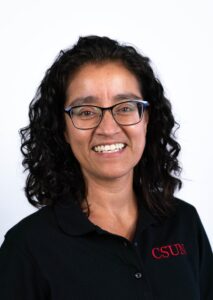
Feeling and Sinking into Our Bodies
I was asked for pictures of me while teaching in the classroom. An organization I’m part of wanted them for one of their platforms and I obliged. I asked a student to use their phone to take pictures of me during one of our class sessions. I asked them to do it discreetly so the pictures could be as candid as possible. And boy were they candid—and revealing! I was rolling laughing as I saw myself in all kinds of animated postures: down on one knee, face looking upward, arms outstretched toward the sky; all manner of facial expressions and creative hand gestures; nutty drawings of giant circles and spirals on the chalkboard as I tried to explain who-knows-what concept. It was a surprise to me that my teaching style was so animated and a bit dramatic. And while it amused me to see this about myself, it did not make me self-conscious, for even though I had not realized this about myself, my students surely had known me this way the whole time. I got to see what my teaching looked like a little better and know that while there is no single way to teach, I surely had mine.
The larger point, of course, is that there is no blueprint to how we embody our teaching, and the more we understand this and understand ourselves, the better we can move into our own.
I had received an earlier lesson on embodiment the very first time I presented a paper at the annual meeting of the American Academy of Religion (AAR). I hated every minute of my first paper presentation: I hated the podium—how much it blocked my sense of connection with the listeners and made me feel like I could not see everyone clearly. I hated the microphone because it meant I couldn’t move about and I had to stand on my tiptoes to try and keep it at the right level. I hated reading the paper because it meant I was the only one speaking that whole time. It was a stressful and miserable experience. The following year, then, when I was to take part in a commemorative panel scheduled in one of the very large presentation rooms at AAR, I knew I had to find a way to change my experience of presenting.
Through a friend, I received acting coach tips to help me feel more comfortable and confident about presenting. The advice in a nutshell was to experiment and play with the embodiment of the activity: practice being at the podium, around it, in front of it; explore ways to change my spatial relationship with the listeners, the paper, the microphone. Play with time, pauses, moments of possible interactions with the listeners, even if not explicitly verbal. She told me to listen to what my body was telling me through its discomfort—what exactly was not working? —and to explore ways to address and attend to the cause of the experience. I should accept that presenting in the traditional way did not work for me and explore and play with various adjustments and shifts to discover the approach that did work for me. Effectively, she released me from the idea that there was a single blueprint for conference paper presentations and encouraged me to bring myself, mind and body, to discover my own.
In my last post I wrote that “we teach humans, not subjects,” and argued that in our teaching it is important to attend to the humans before us first and foremost. It is likewise important to attend to ourselves, to who we are in the wholeness of our mind and body, and to allow ourselves to feel and sink into the embodiment of the teaching relationship. Teaching is relational as much as it is embodied. And it takes some experimenting to find one’s grounding within them both. But before receiving the tips from the acting coach, I received an invaluable tip from a student that has remained with me since my first week as a professor.
The Faculty Development team at my university invited students to join the new faculty for lunch and an informal Q & A during the new faculty orientation event. I asked the student sitting at my table, “If you could give one piece of advice to new faculty, what would that be?” He said, “Let us see you as human, sometimes. Be ok showing us your ‘non-professor human side’; it helps us relate to you better.” I always remember that tip—it reminds me that it is okay to bring my peculiar, embodied self to the relational activity of teaching and to give myself permission to sink into it, even with its flair and dramatic gestures. What’s yours?
Leave a Reply